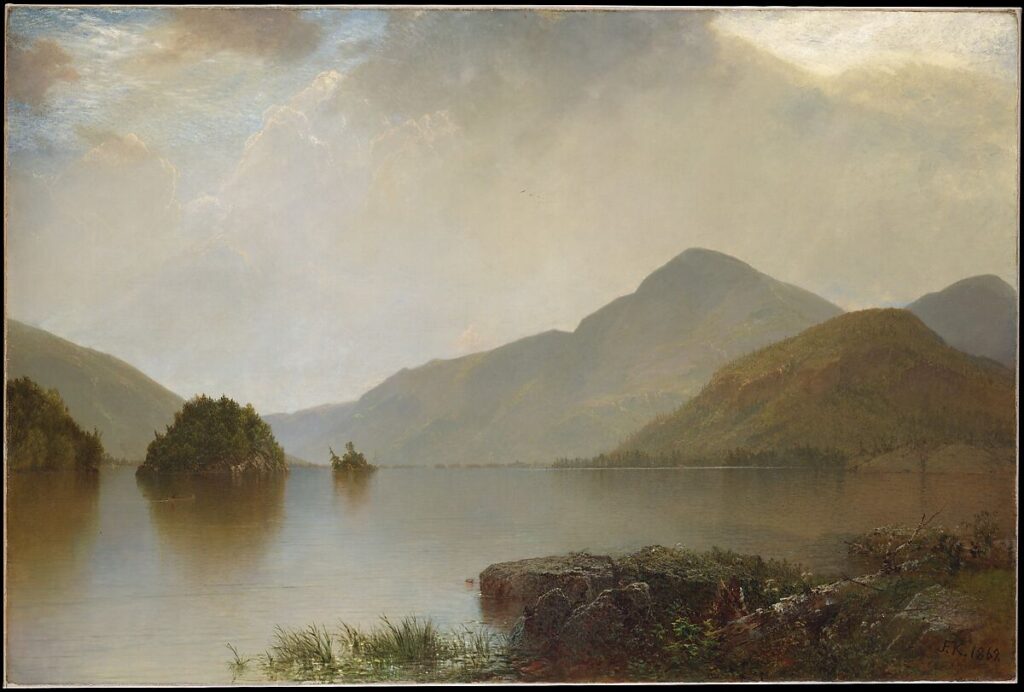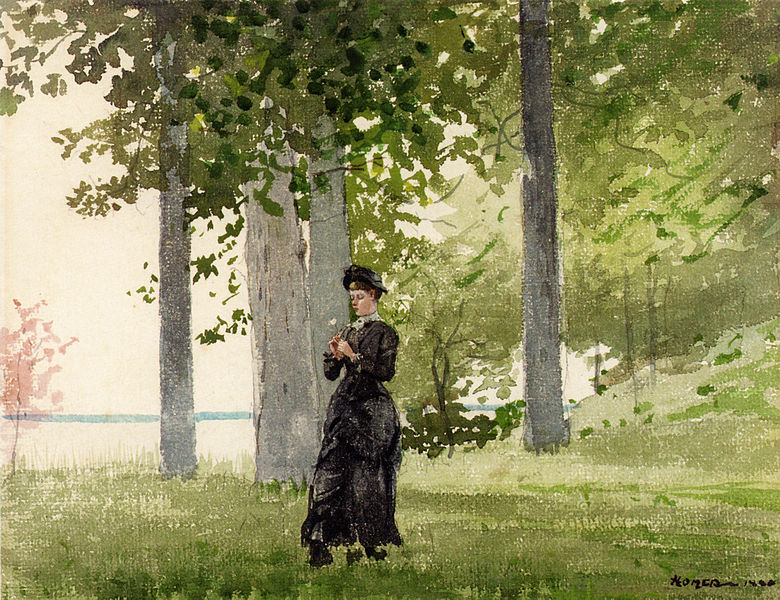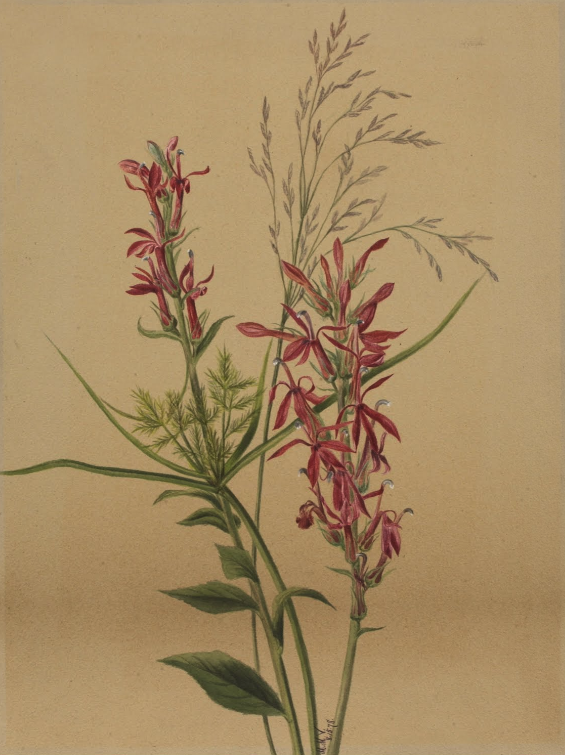The Lake Trip; Or, Going a Fishing
By Fanny Fern
Annotations by Rene Marzuk

Oh! Aunty, it has done raining! The sun is shining so brightly; we are going to the Lake to fish — Papa says so — you and Papa, and Bell, and Harry, and Emma, and Agnes, and our dog Bruno.
Of course, Aunty, who was always on hand for such trips, wasn’t five minutes springing to her feet, and in less than half an hour Pat stood at the door with the carriage, (that somehow or other always held as many as wanted to go, whether it were five, or forty-five;) “Papa” twisting the reins over hats and bonnets with the dexterity of a Jehu;[1] jolt — jolt — on we go, over pebblestones — over plank roads — past cottages — past farms — up hill and down, till we reach “the Lake.”
Shall I tell you how we tip-toed into the little egg-shell boats? How, after a great deal of talk, we all were seated to our minds — how each one had a great fishing rod put into our hands — how Aunty, (who never fished before,) got laughed at for refusing to stick the cruel hook into the quivering little minnows used for “bait” — and how, when they fixed it for her, she forgot all about moving it round, so beautiful was the “blue above, and the blue below,” [2] until a great fish twitched at her line, telling her to leave off dreaming and mind her business — and how it made her feel so bad to see them tear the hook from the mouth of the poor fish she was so un-lucky as to catch, that she coaxed them to put her ashore, telling them it was pleasure not pain she came after — and how they laughed and floated off down the Lake, leaving her on a green moss patch, under a big tree — and how she rambled all along shore gathering the tiniest little shells that ever a wave tossed up —and how she took off her shoes and stockings and dipped her feet in the cool water, and listened to the bees’ drowsy hum from the old tree trunk close by, and watched the busy ant stagger home, under the weight of his well earned morsel — and how she made a bridge of stones over a little streamlet to pluck some crimson lobelias, growing on the other side, and some delicate, bell-shaped flowers, fit only for a fairy’s bridal wreath,[3] — and how she wandered till sunset came on, and the Lake’s pure breast was all a-glow, and then, how she lay under that old tree, listening to the plashing waves, and watching the little birds, dipping their golden wings into the rippling waters, then soaring aloft to the rosy tinted clouds? Shall I tell you how the grand old hills, forest crowned, stretched off into the dim distance — and how sweet the music of childhood’s ringing laugh, heard from the far-off shore — or how Aunty thought ’twas such a pity that sin, and tears, and sorrow, should ever blight so fair a world?
But Aunty mustn’t make you sad; here come the children leaping from the boat; they v’e “caught few fish,” but a great deal of sunshine, (judging from their happy faces.) God bless the little voyagers, all; the laughing Agnes, the pensive Emma, the dove-eyed, tender-hearted Mary, the rosy Bell, the fearless Harry. In the green pastures by the still waters, may the dear Shepherd fold them.

FERN, FANNY. “The Lake Trip; Or, Going a Fishing,” IN Little Ferns for Fanny’s Little Friends, 27-9. Auburn and Buffalo: Miller, Orton & Mulligan, 1854.
[1] In the Bible’s Old Testament, before leading the revolt after which he would become king of Israel, Jehu was a commander of chariots.
[2] The line “with the blue above, and the blue below” comes from “The Sea,” a poem by English poet Bryan Waller Procter (1787-1874), who wrote under the pen name of Barry Cornwall. You can find the full poem here.

[3] Cardinal flower (Lobelia Cardinalis) is a native American herbaceous perennial in the bellflower family. Its bright red flowers are pollinated by hummingbirds.
Contexts
Fanny Fern (born Sara Payson Willis; 1811-1872) was a very popular newspaper columnist, novelist, and children’s writer. She became the first woman columnist in the United States. From the 1850s to the 1870s, Fern wrote articles and columns for periodicals like Olive Branch, True Flag, Musical World and Times, and New York Ledger. She was known by her irreverent and unapologetic style. During her lifetime, she published three books for children: Little Ferns for Fanny’s Little Friends (1853), The Play-Day Book (1857), and The New Story Book for Children (1864).
Resources for Further Study
- During the first half of the nineteenth century, American attitudes toward nature shifted in part due to the influence of Romantic and Transcendental writers like William Cullen Bryant, Ralph Waldo Emerson, and Henry David Thoreau. Beautiful scenery, picturesque landscapes, and the aesthetic of nature in general began to be perceived as “important to people’s physical and spiritual health and communing with nature as communing with God.” These new perceptions developed into preservationist conservation ideas, to which we can trace, among others, the drive to create many of the protected spaces such as natural parks that we still enjoy today.
- “Recreational Fishing in England and America” (Part 1 and Part 2).
- Fanny Fern Collection at the University of New England’s Library.
Contemporary Connections
Richard Louv’s “Children and Nature Movement.”